Year 7 Written Methods Worksheets
Addition of 4 and 5-digit Numbers
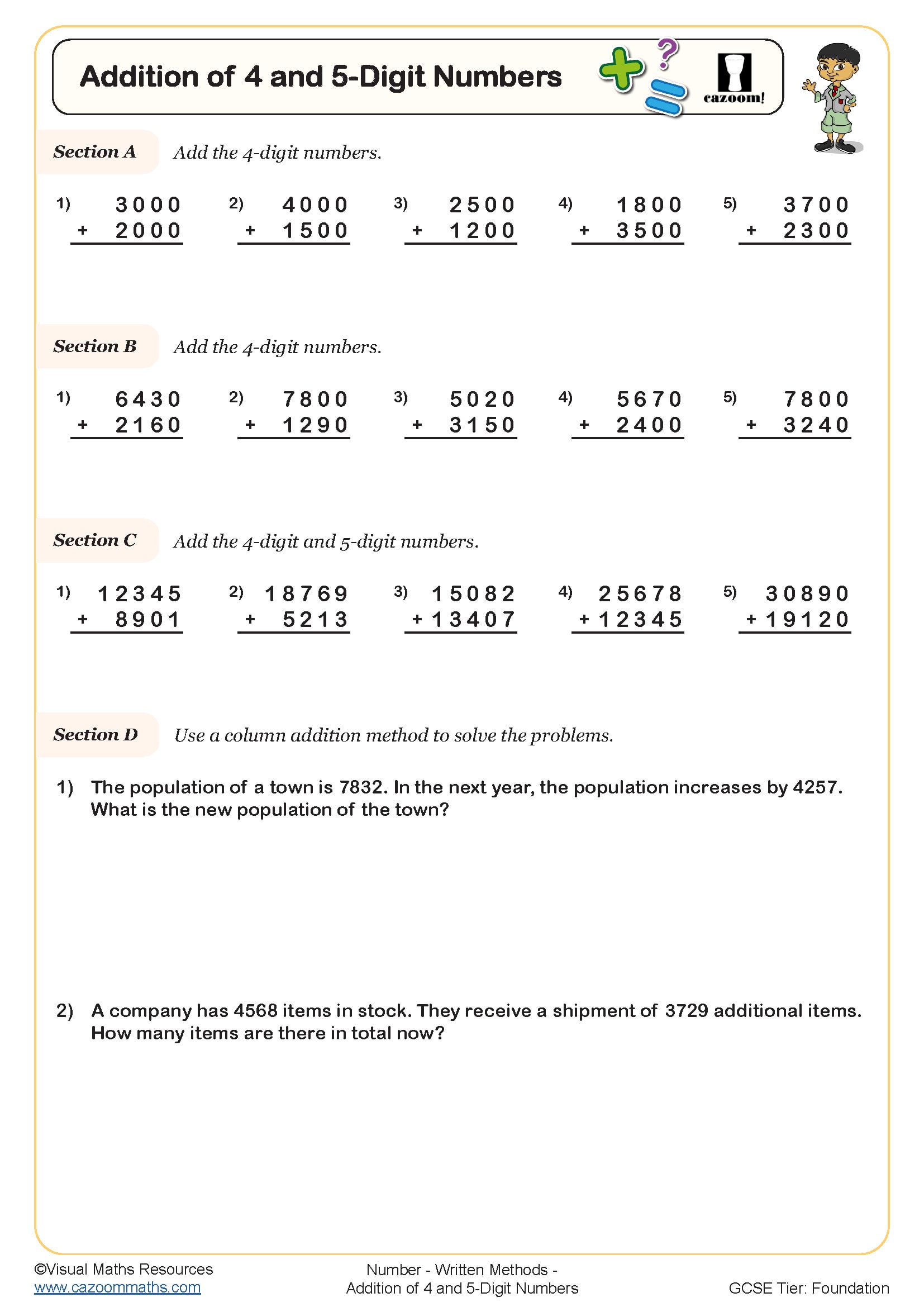
Column Addition - Decimals (A)
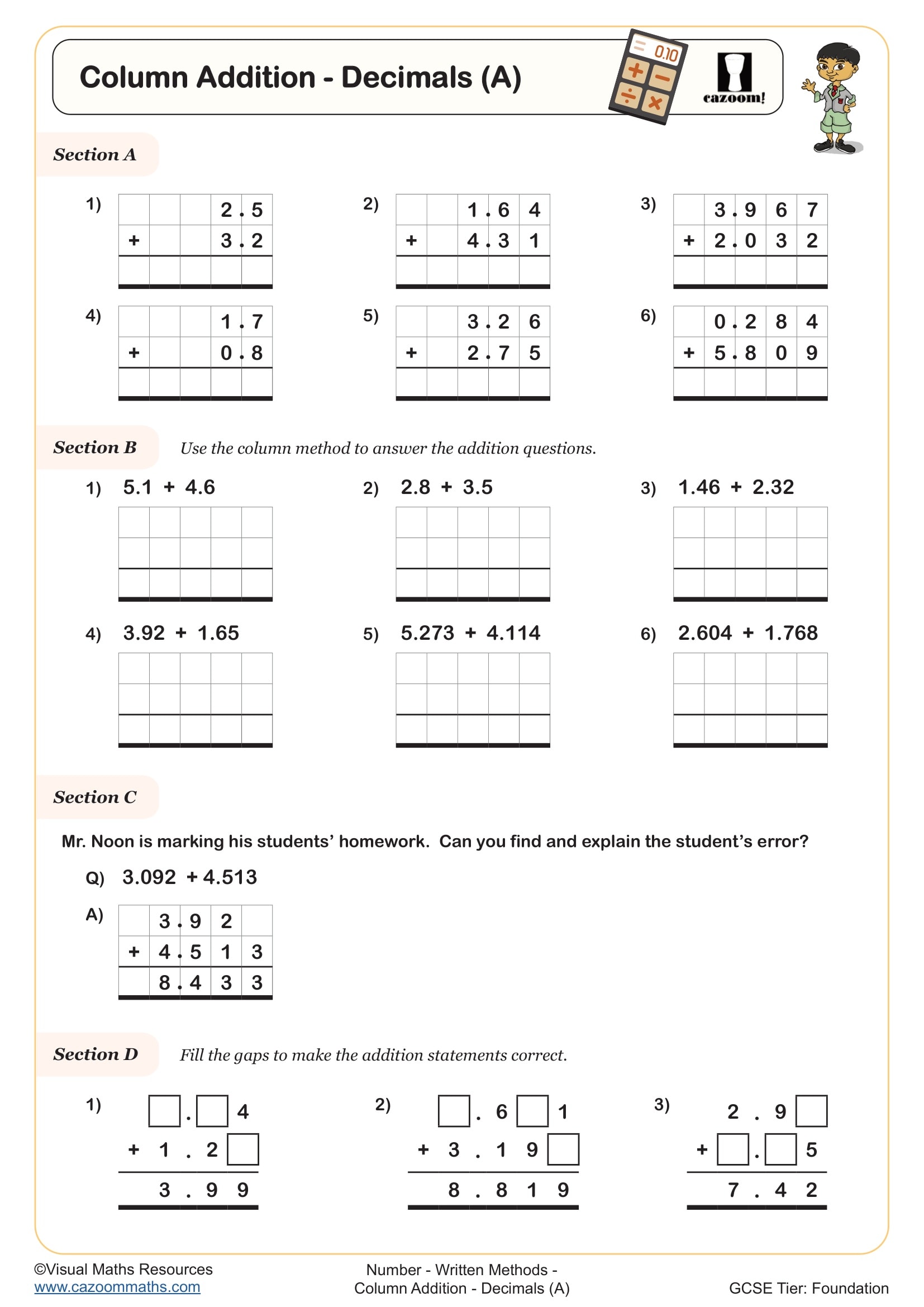
Column Addition - Decimals (B)
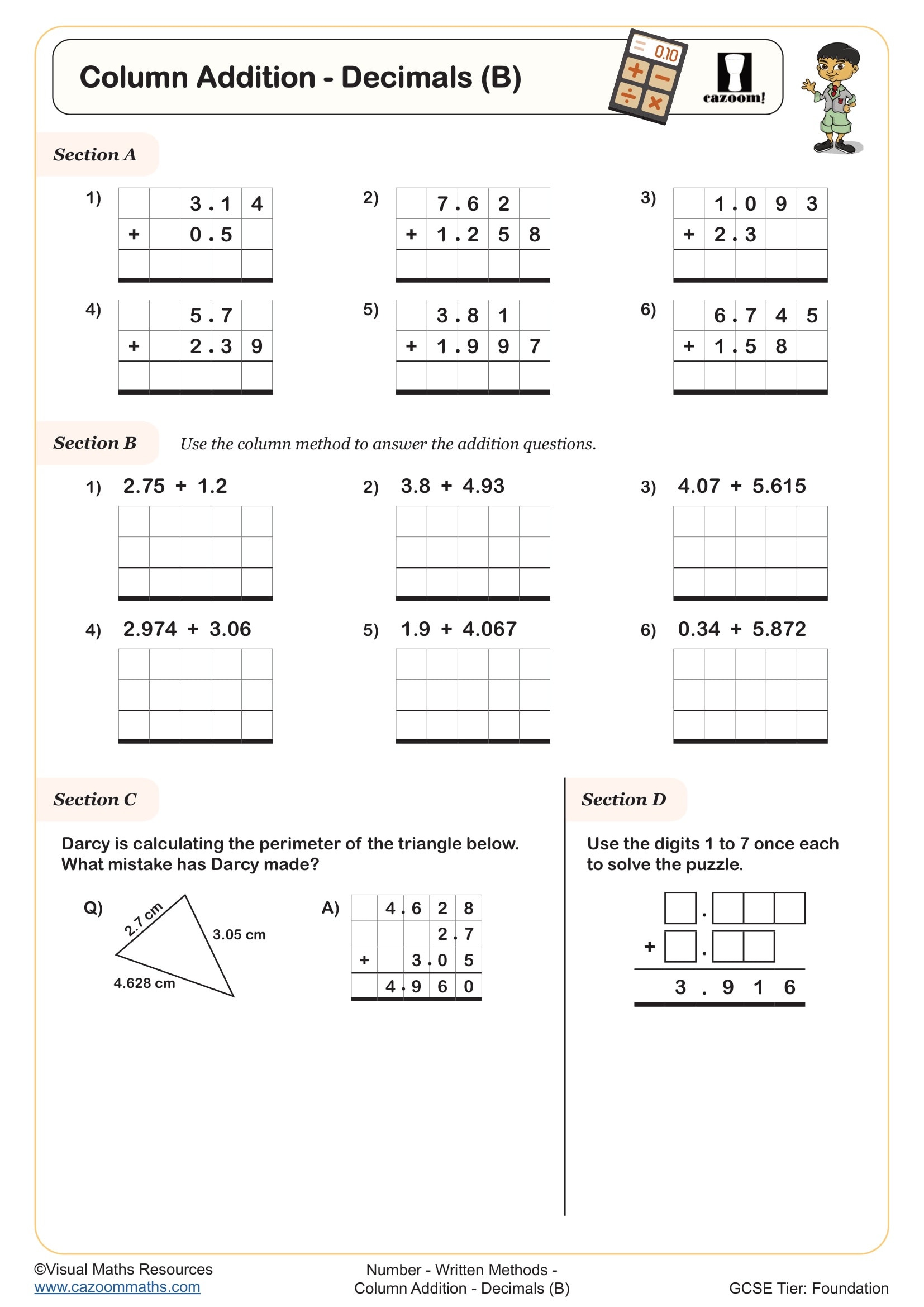
Four Operations Word Problems (A)
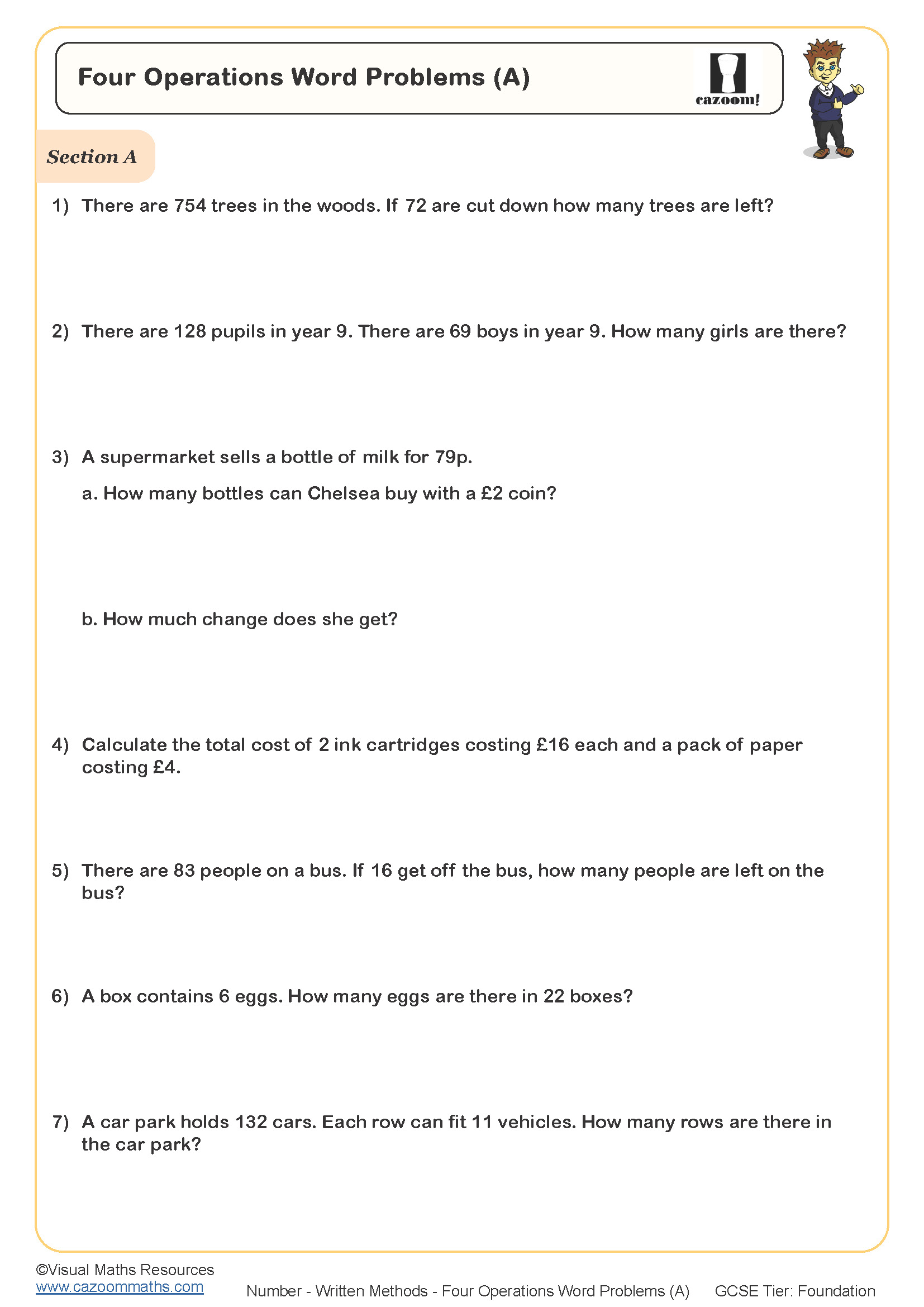
Four Operations Word Problems (A) (With Clues)
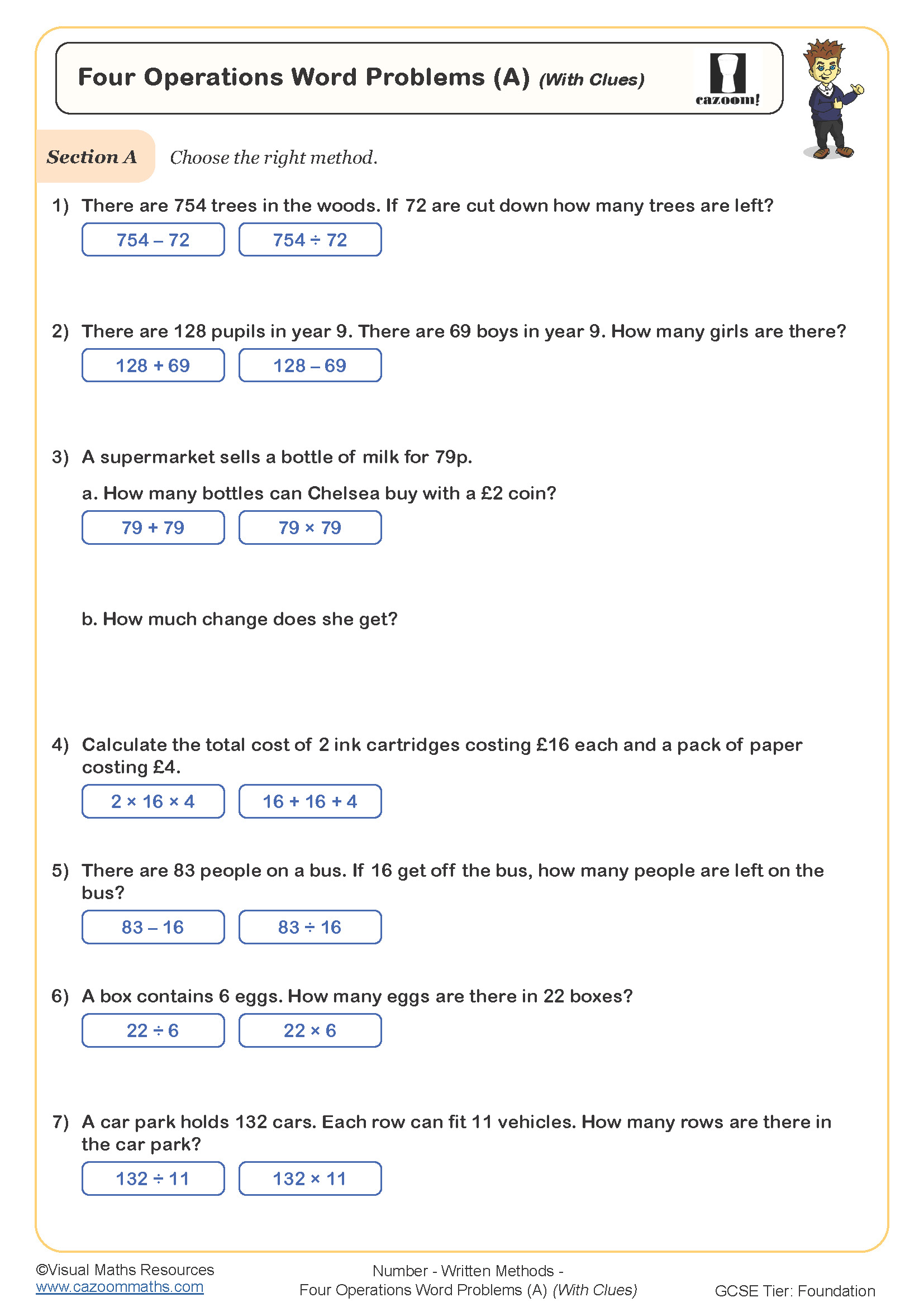
Four Operations Word Problems (B)
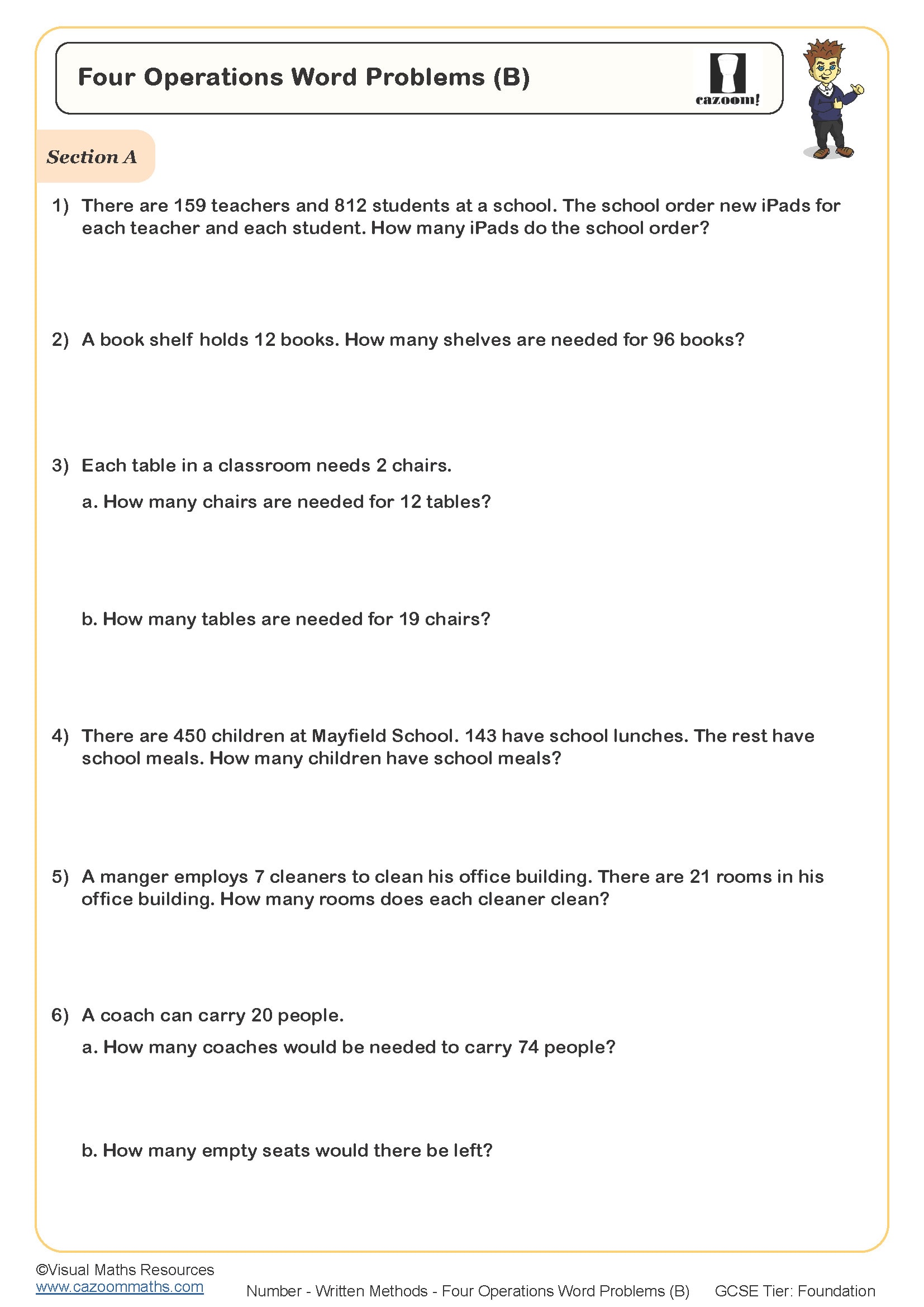
Four Operations Word Problems (B) (With Clues)
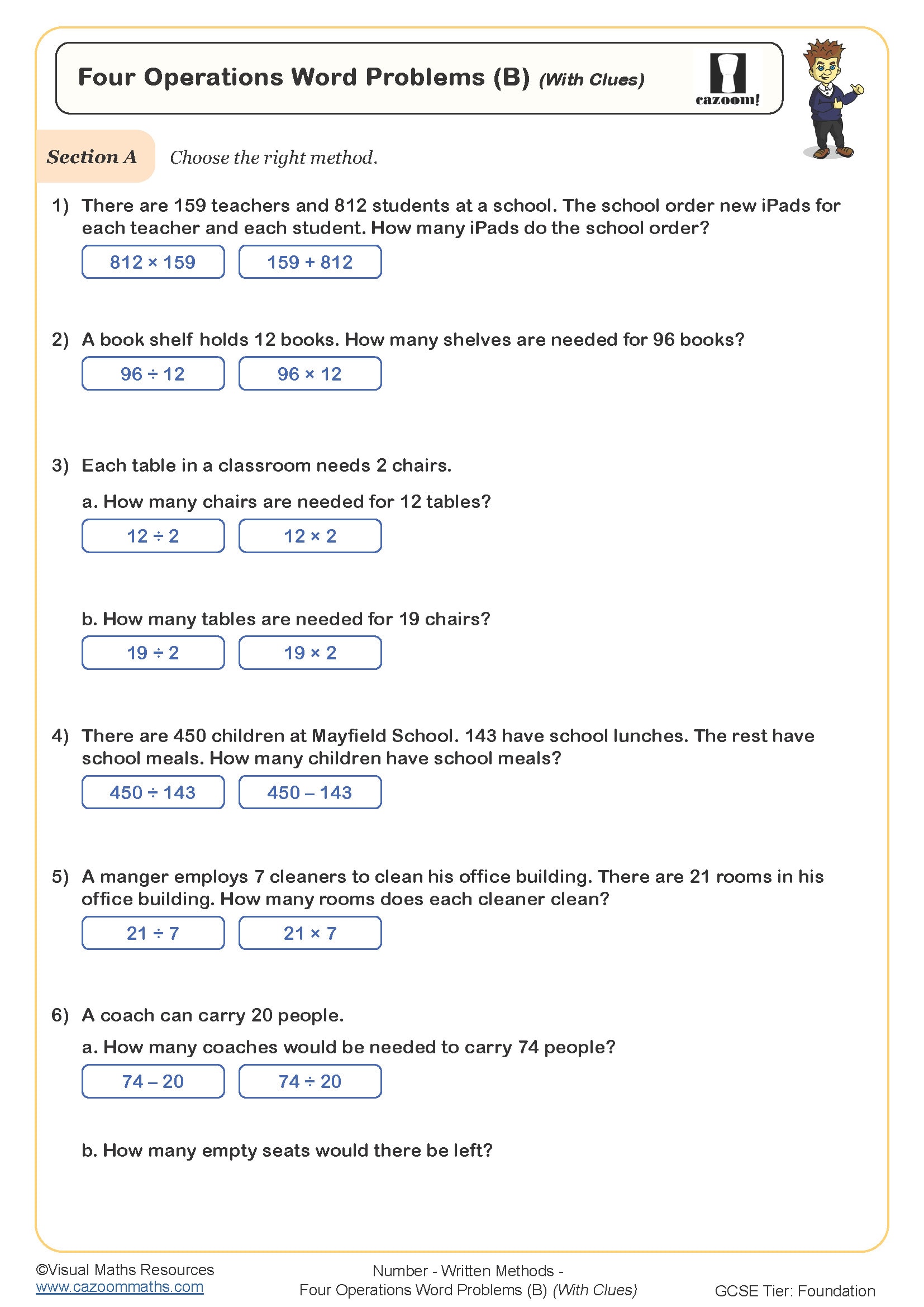
Four Operations Word Problems (C)
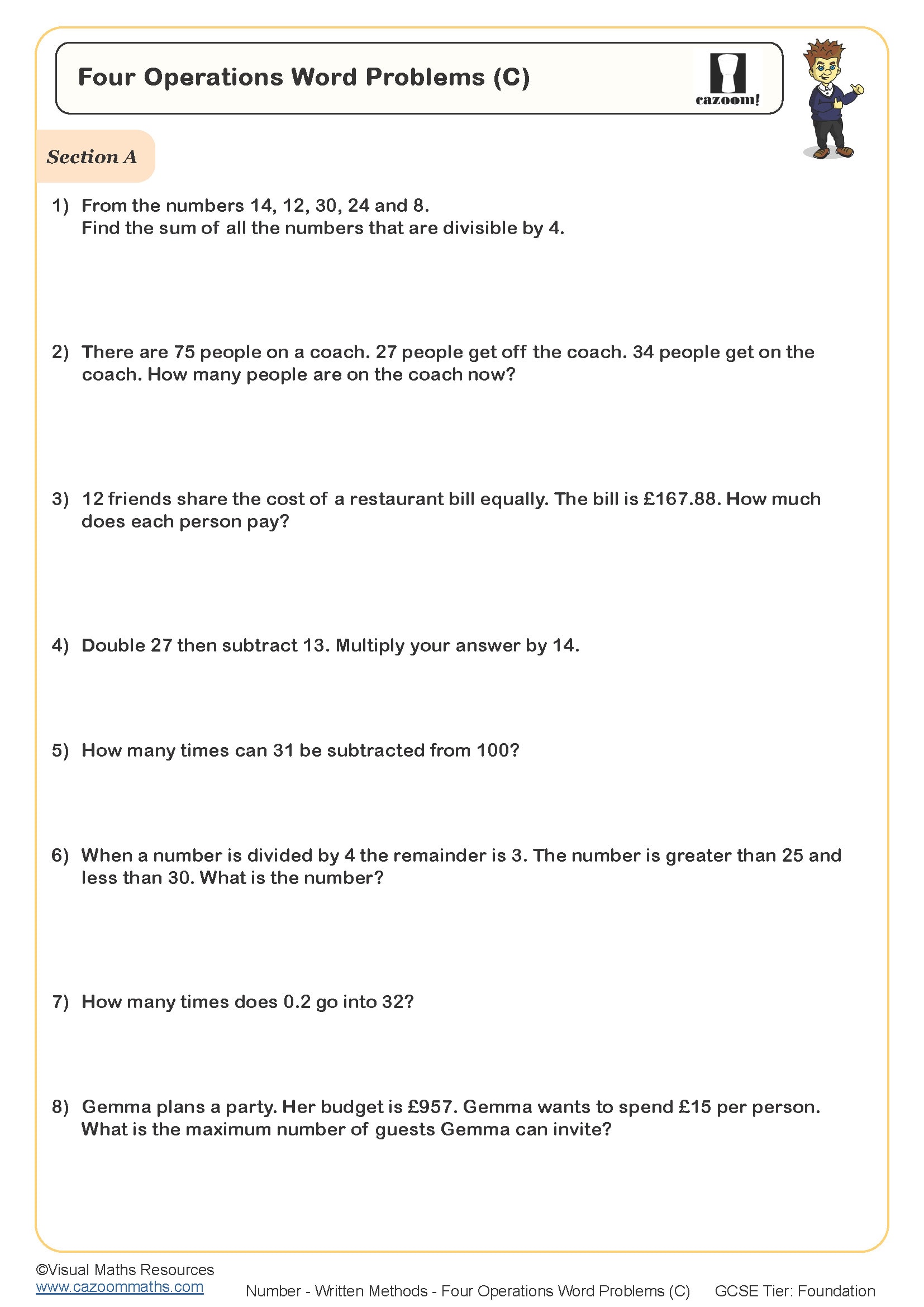
Long and Short Division (A)
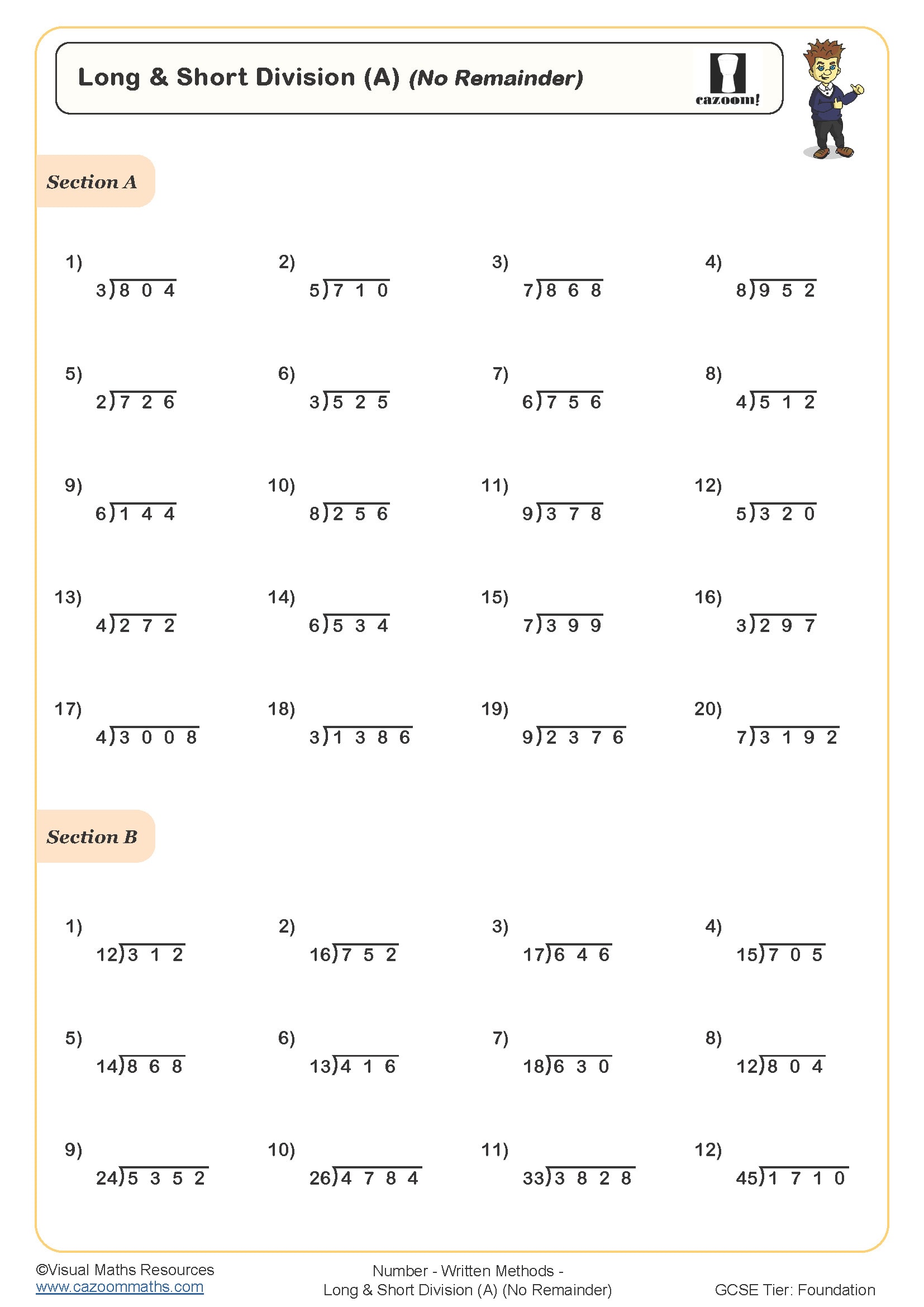
Long and Short Division (B)
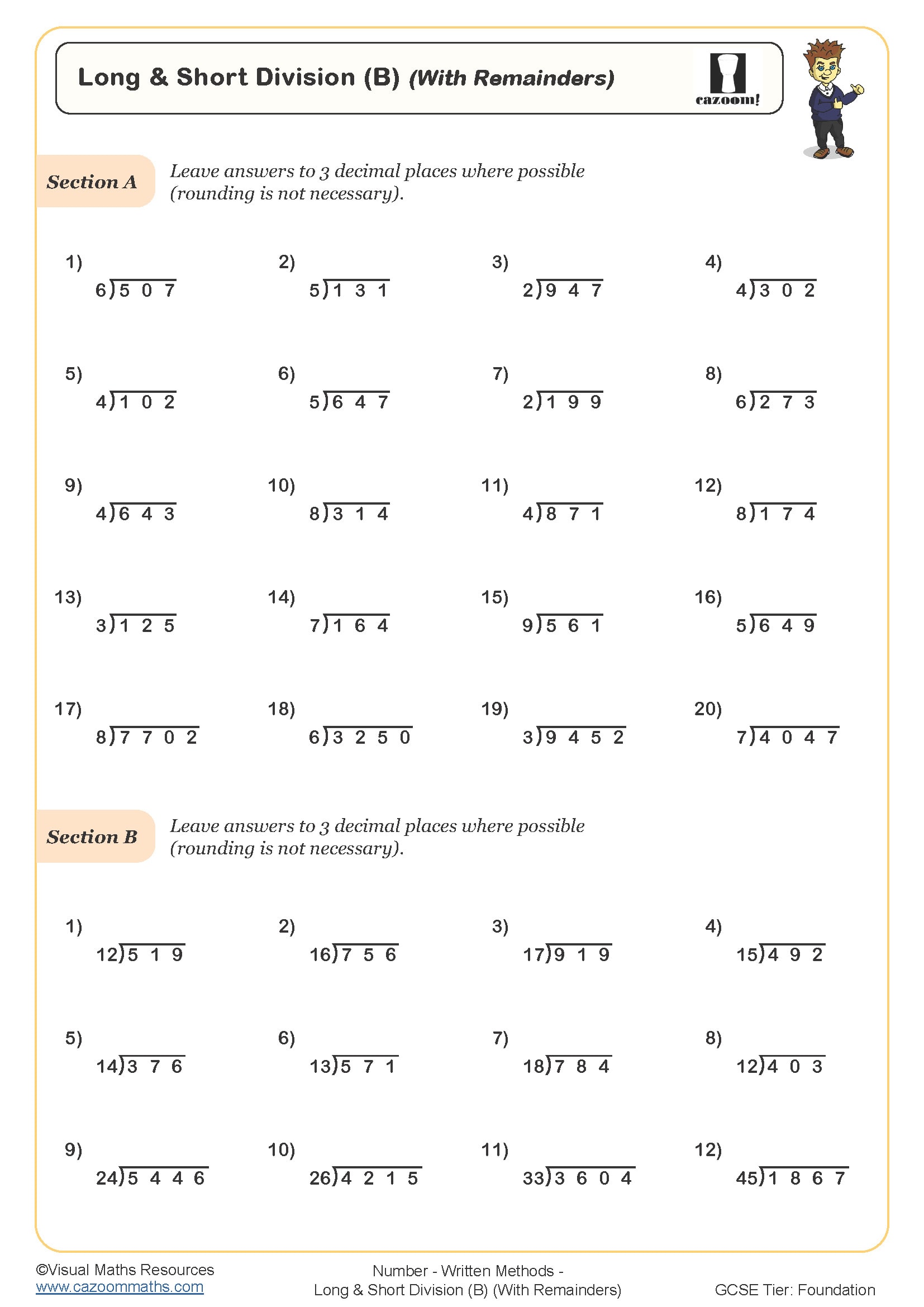
Money Problems (A)
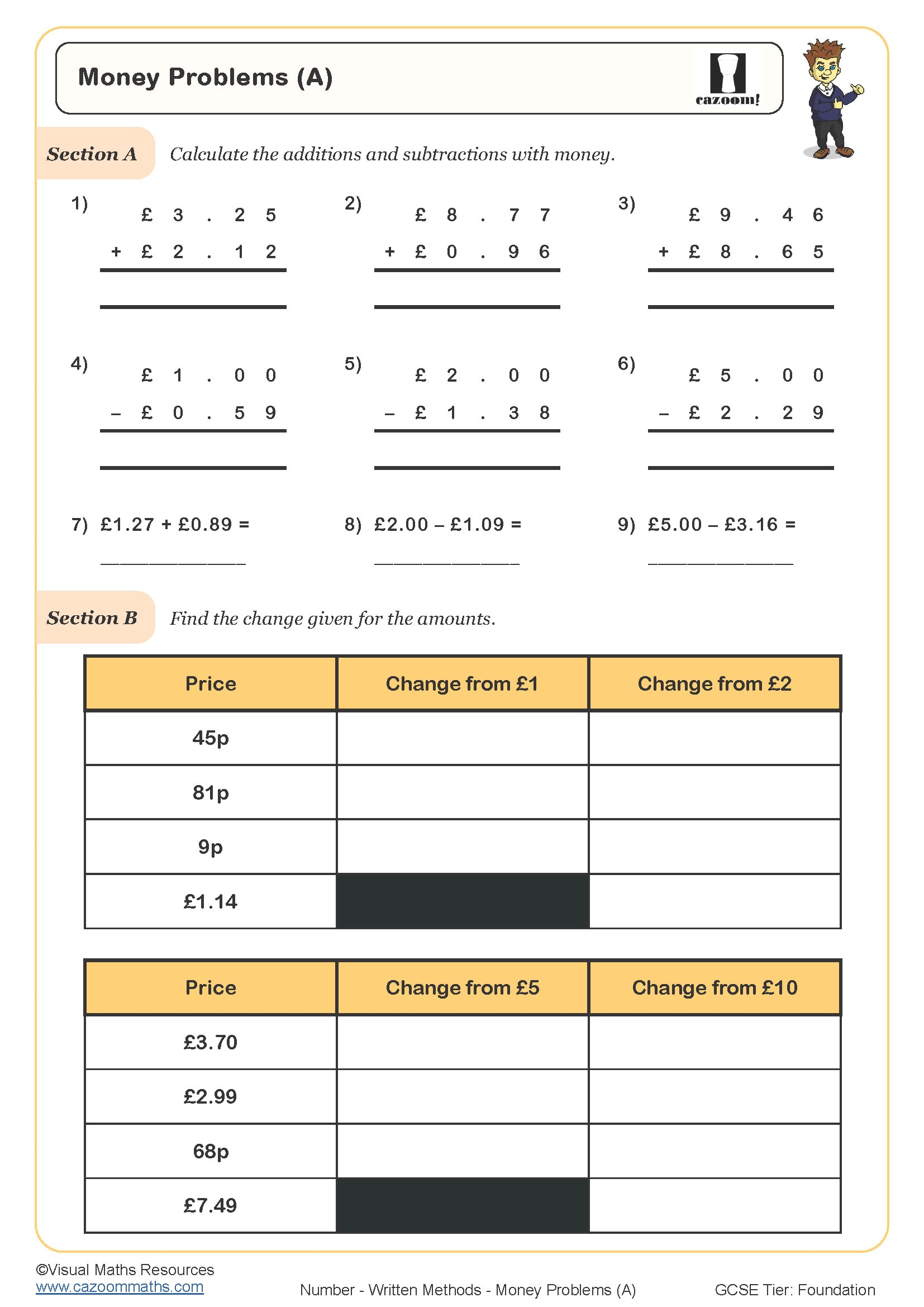
Money Problems (B)
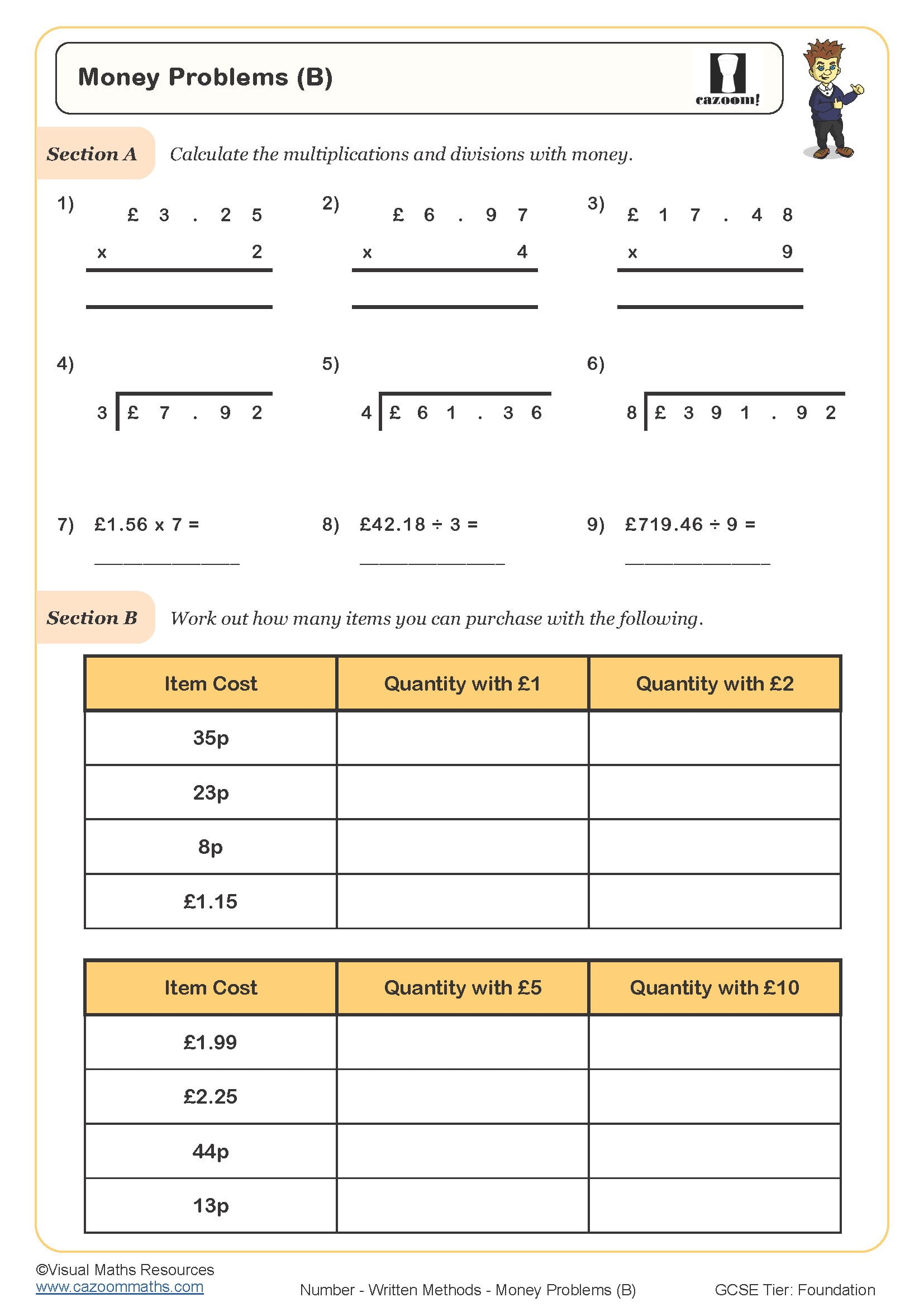
Practising the Column Method for Long Multiplication (A)
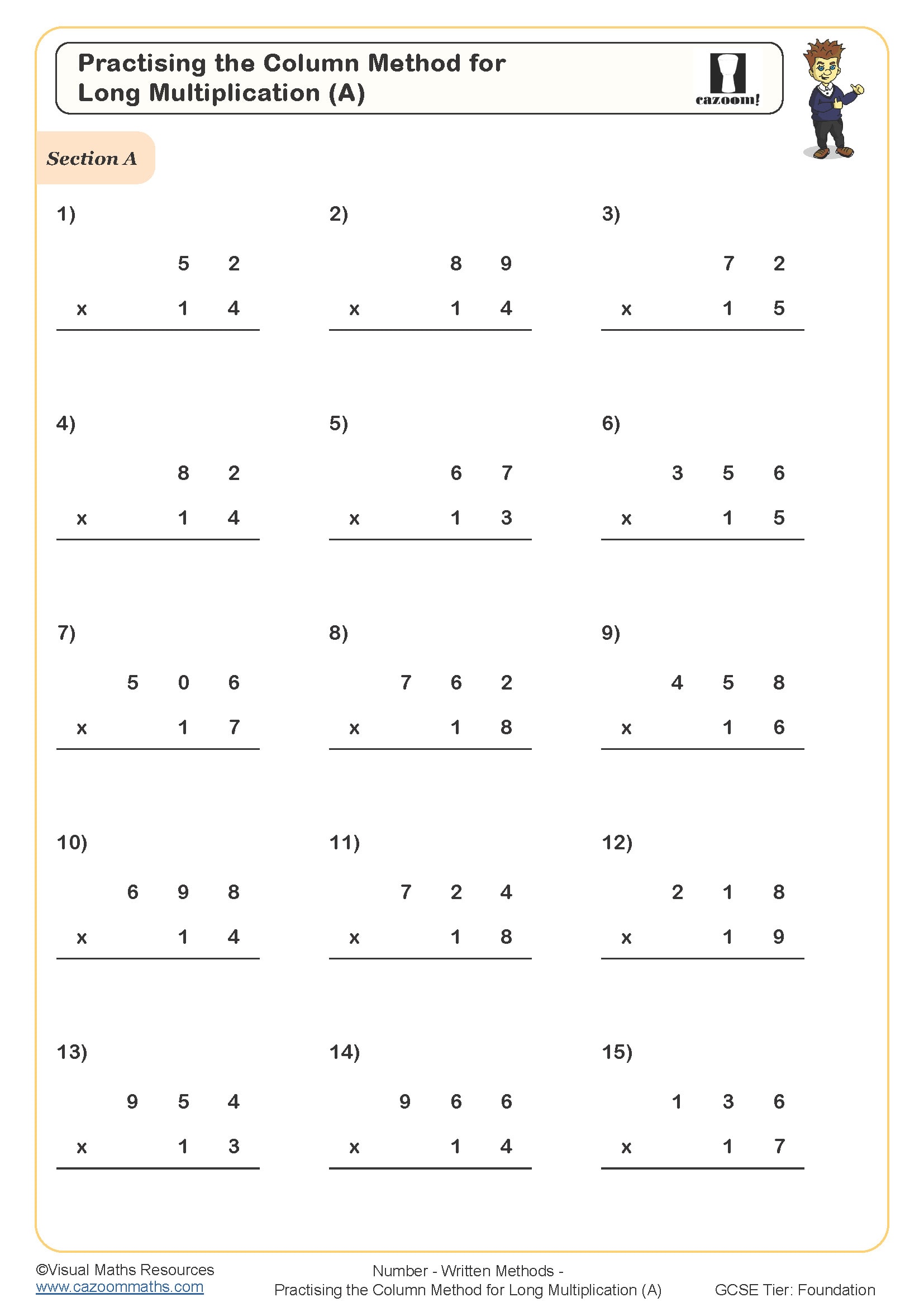
Practising the Column Method for Short Multiplication
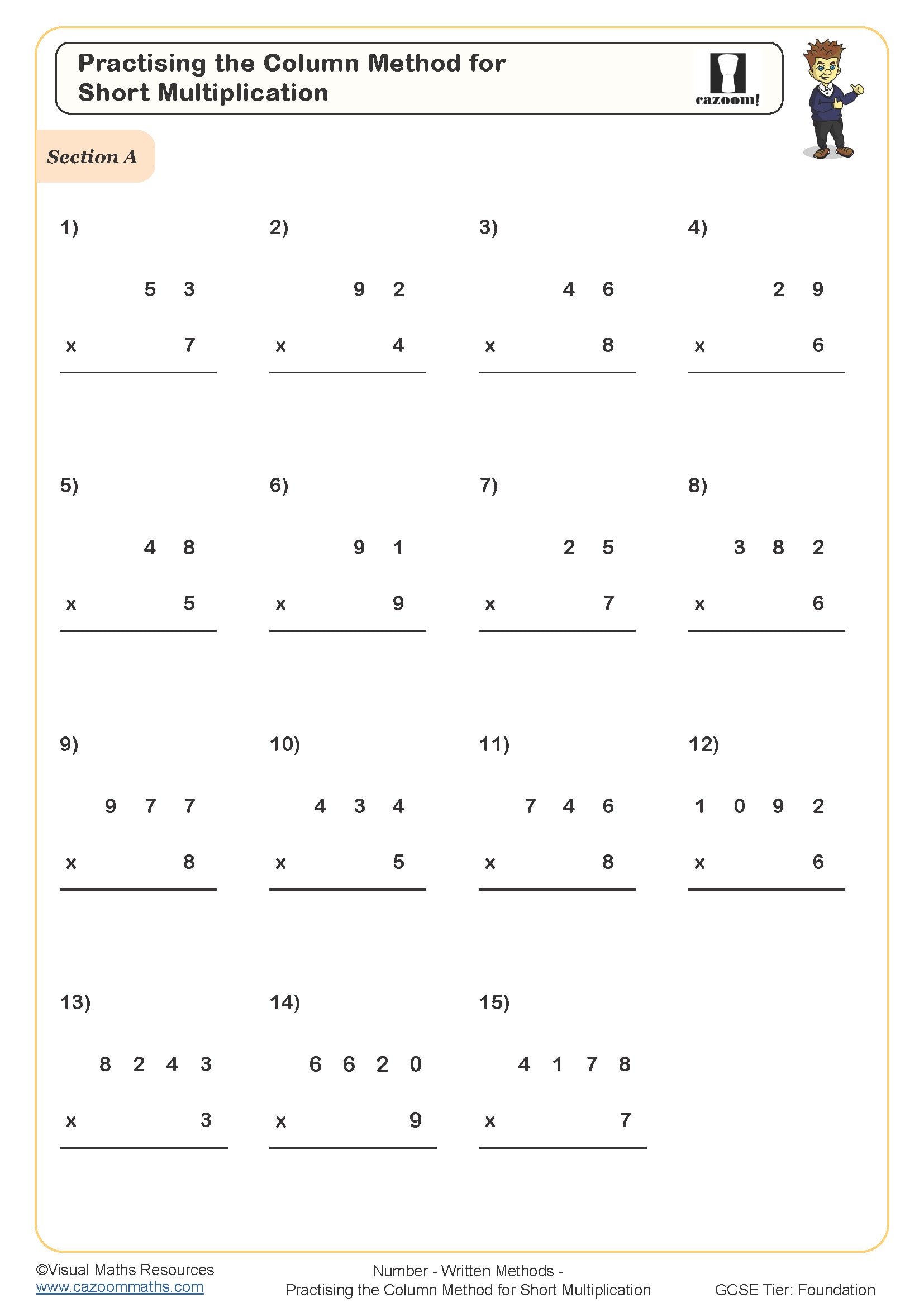
Practising the Grid Method for Long Multiplication
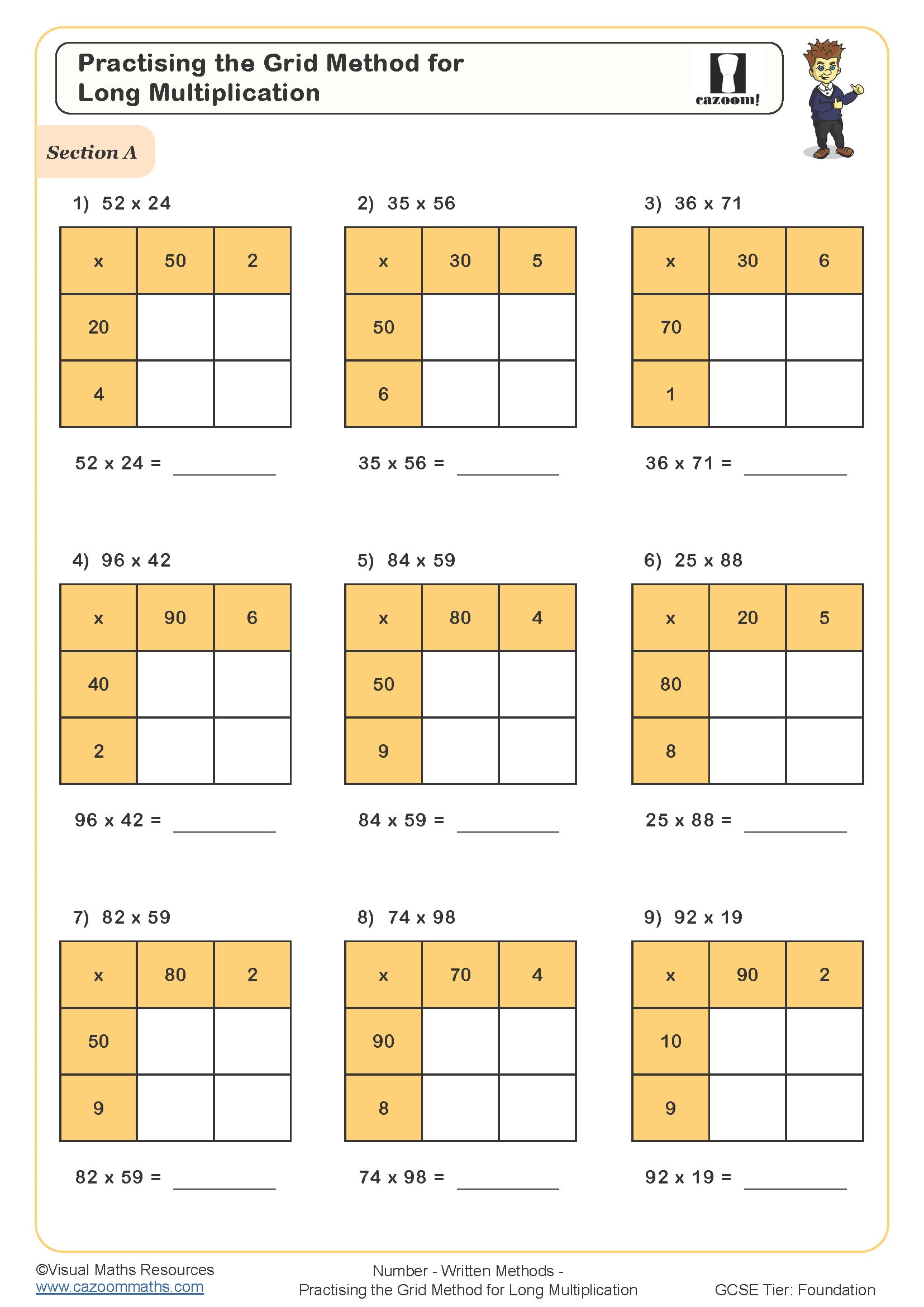
Practising the Grid Method for Short Multiplication (A)
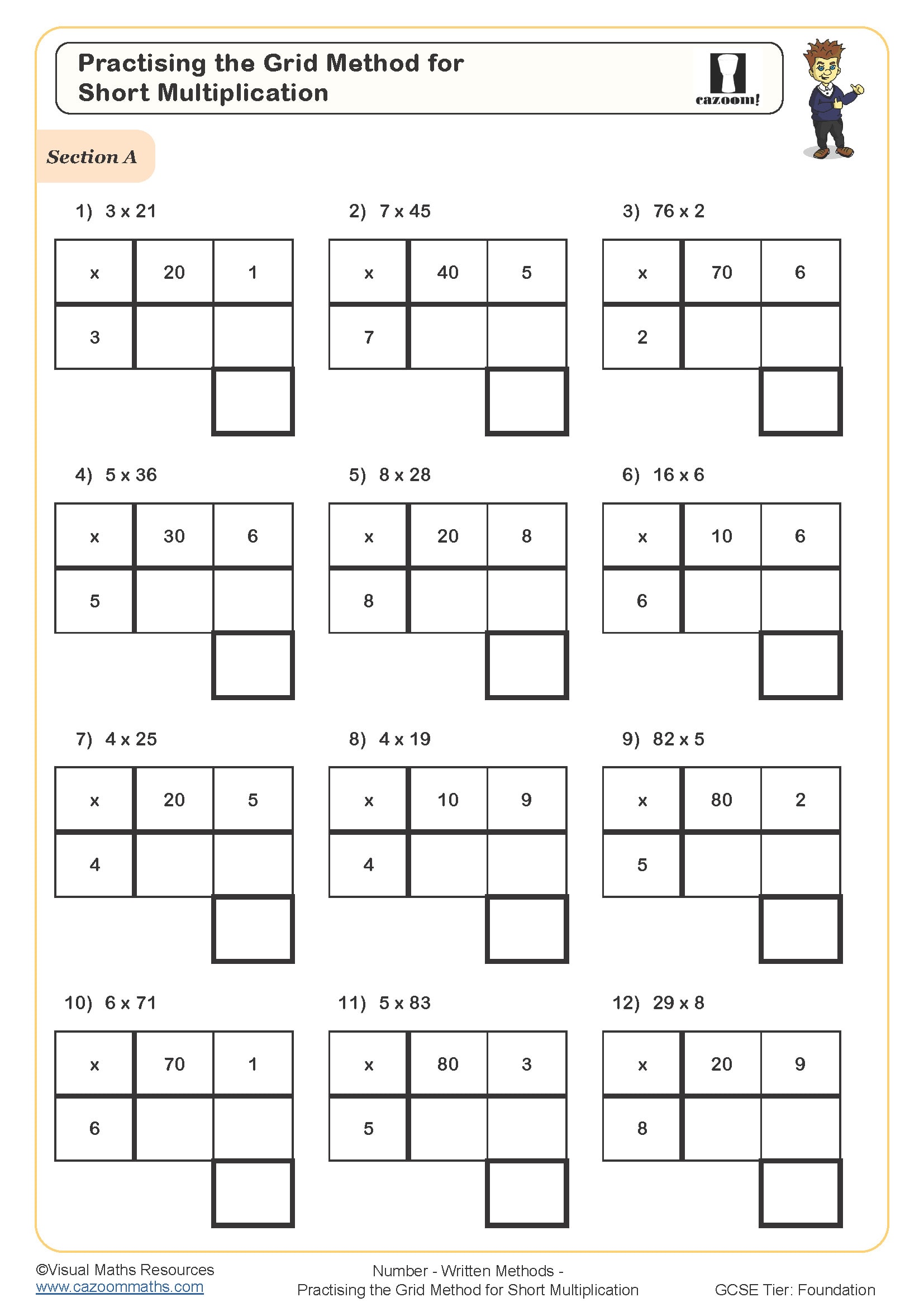
Short Division (A) Dividing 2 Digit Numbers
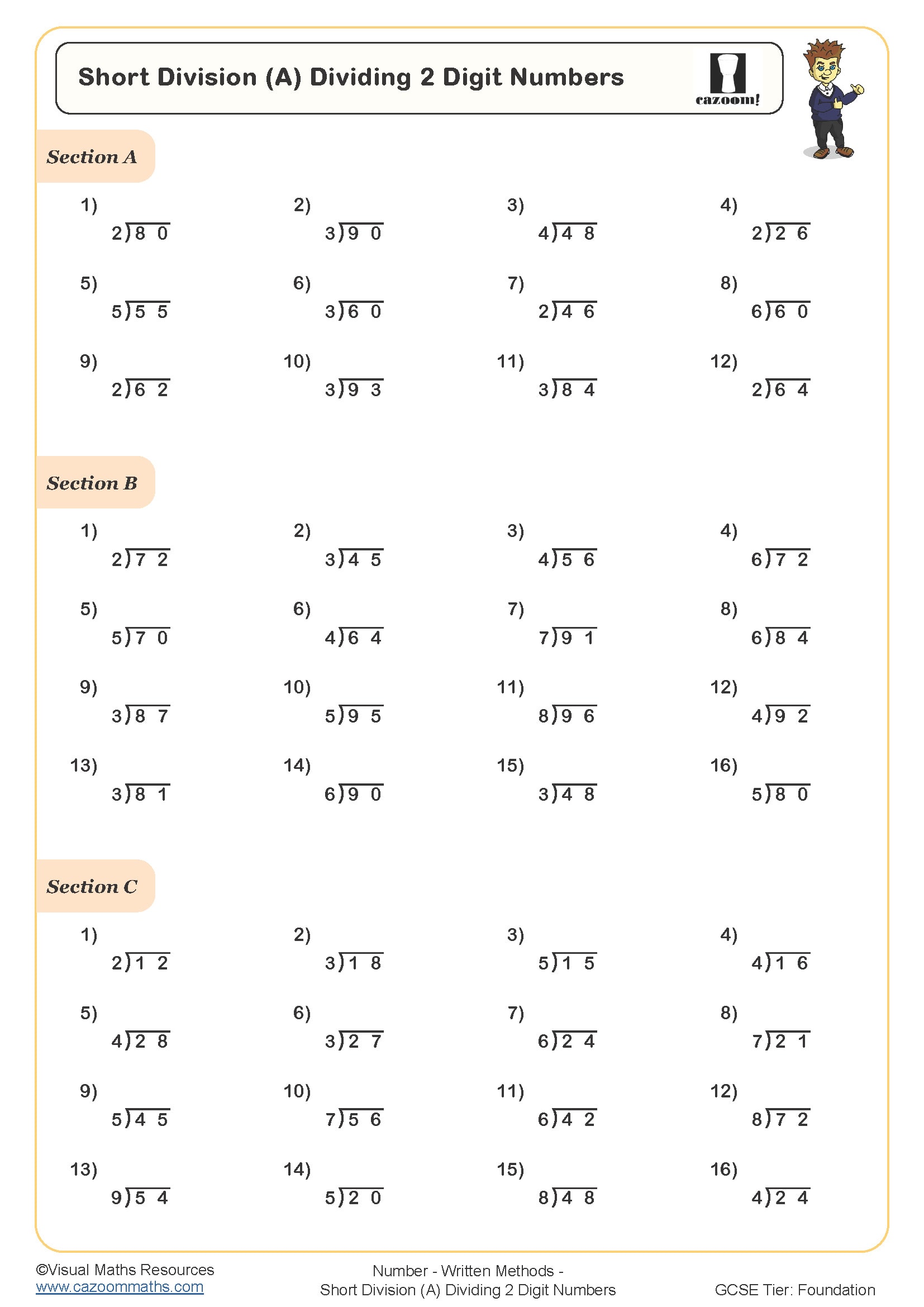
Short Division (B) Dividing 3 Digit Numbers
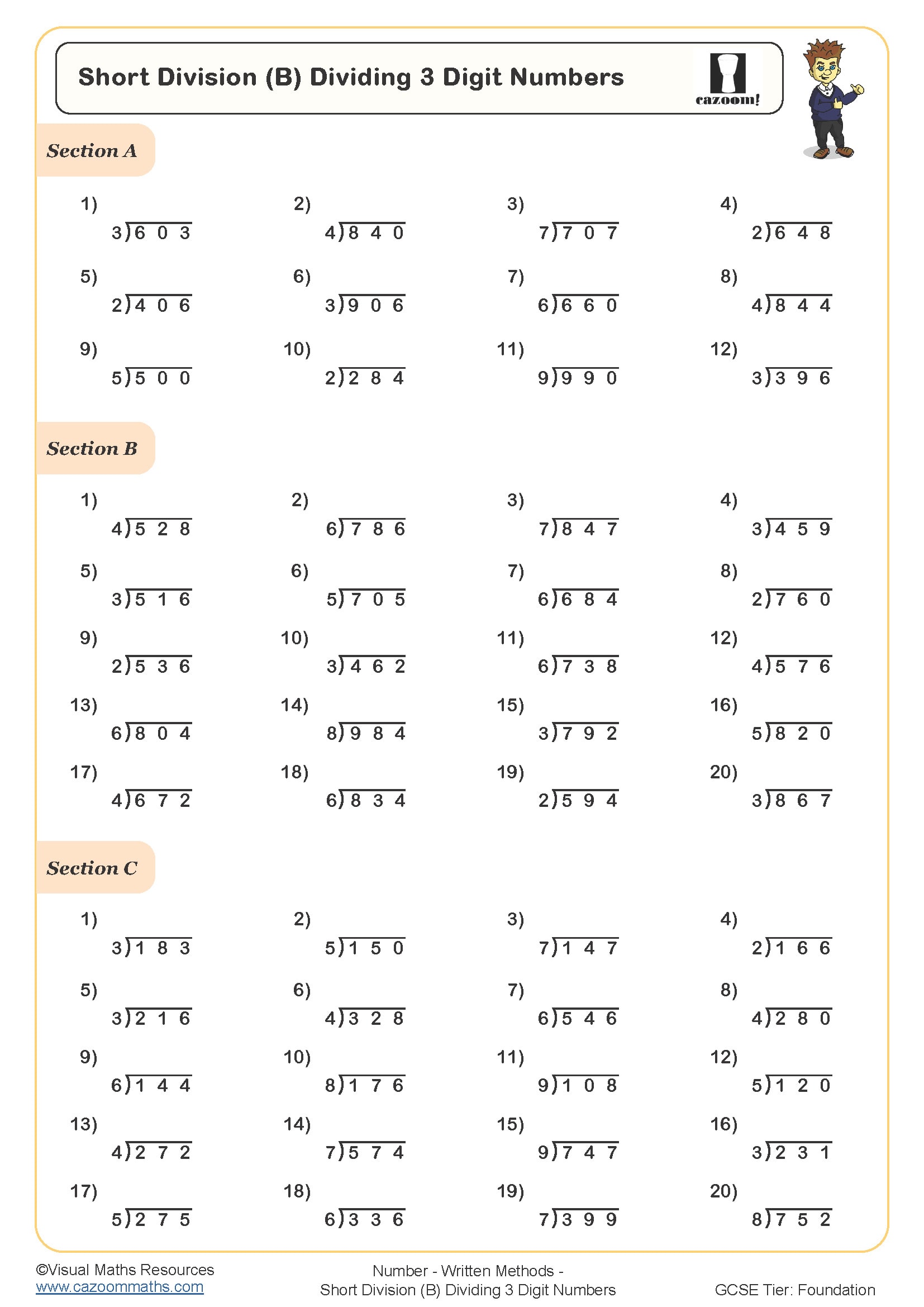
Short Division (C) Dividing 2, 3 and 4 Digit Numbers
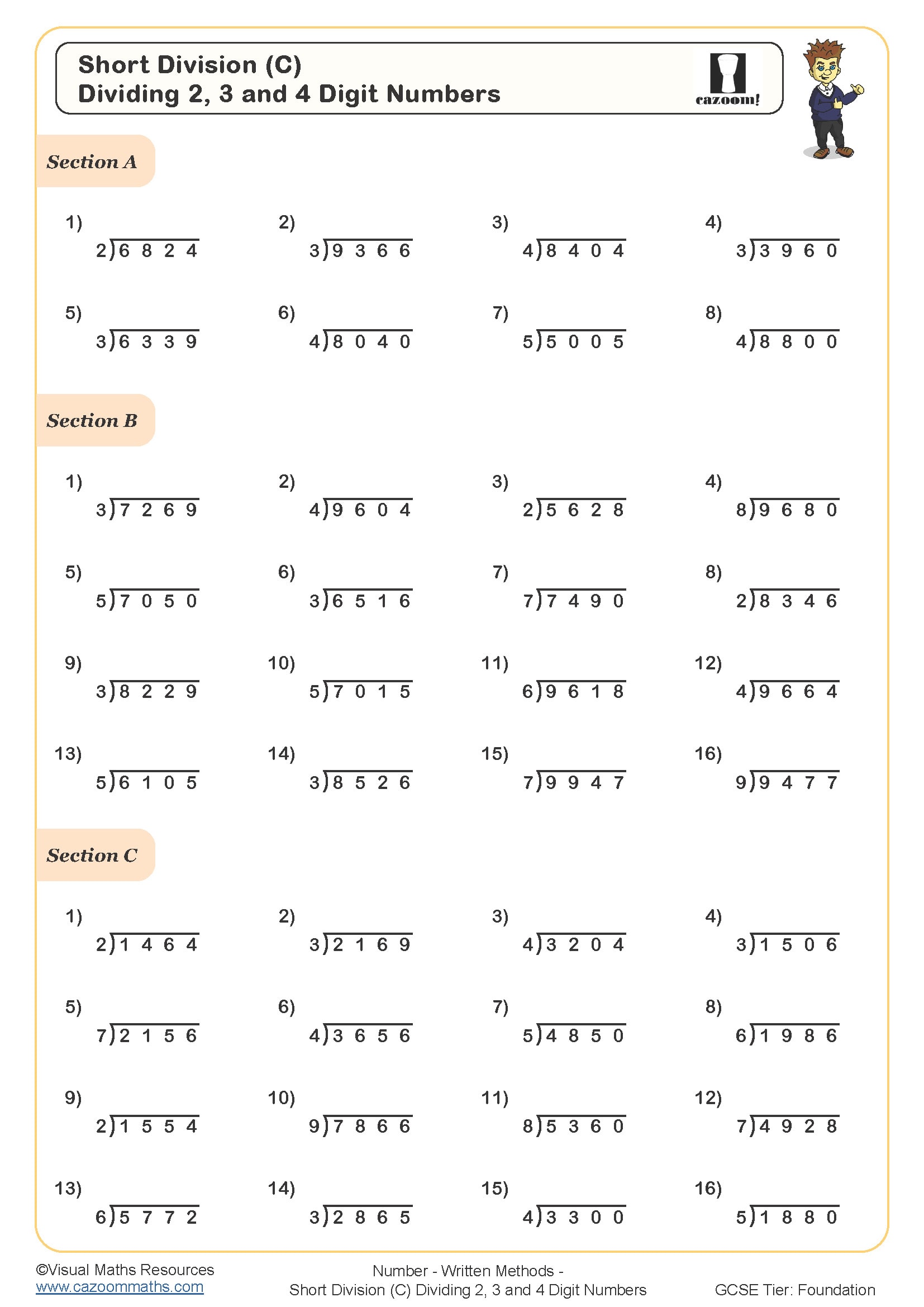
Short Division (D) Dividing 4 Digit Numbers
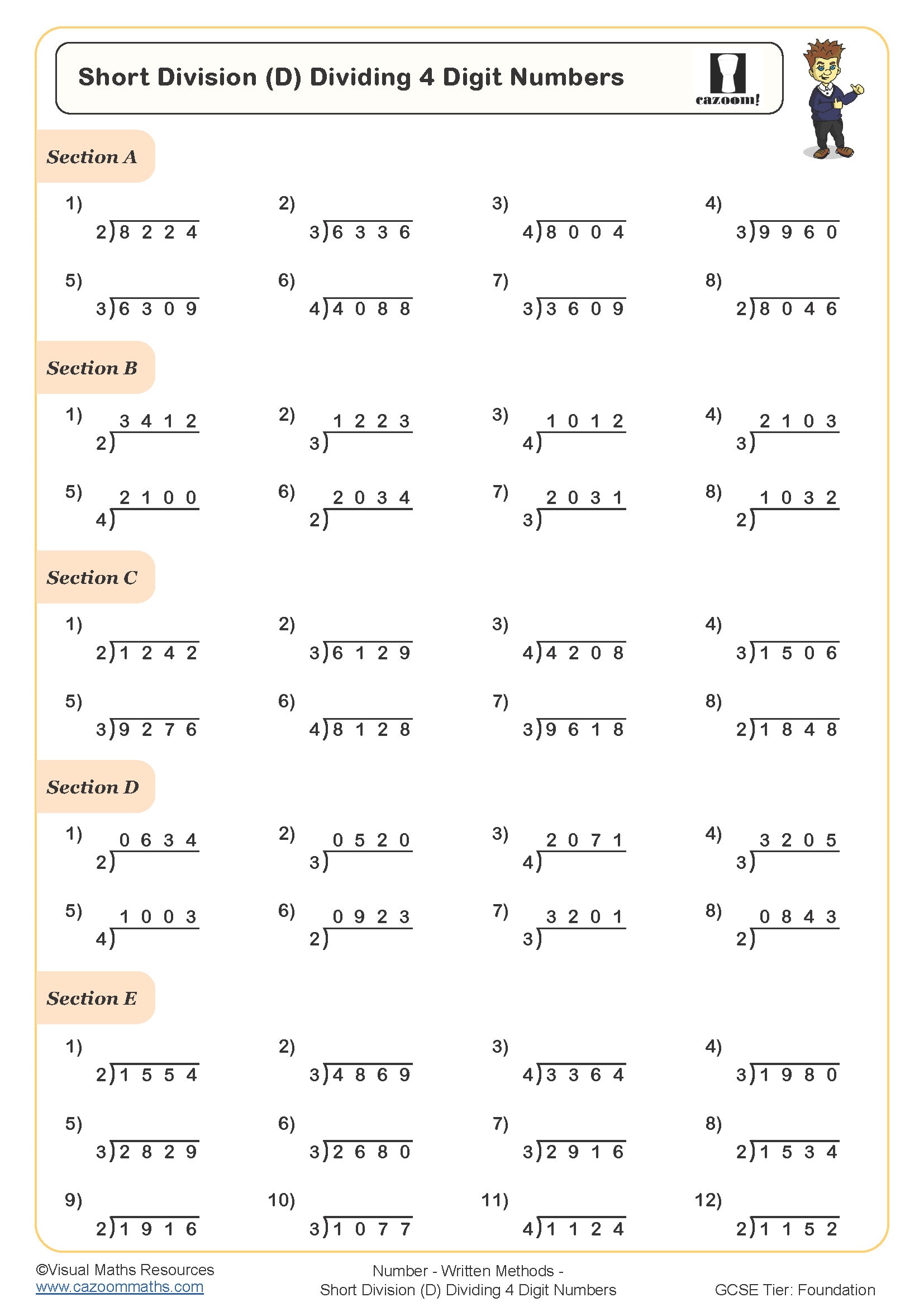
Subtraction of 4 and 5-digit Numbers
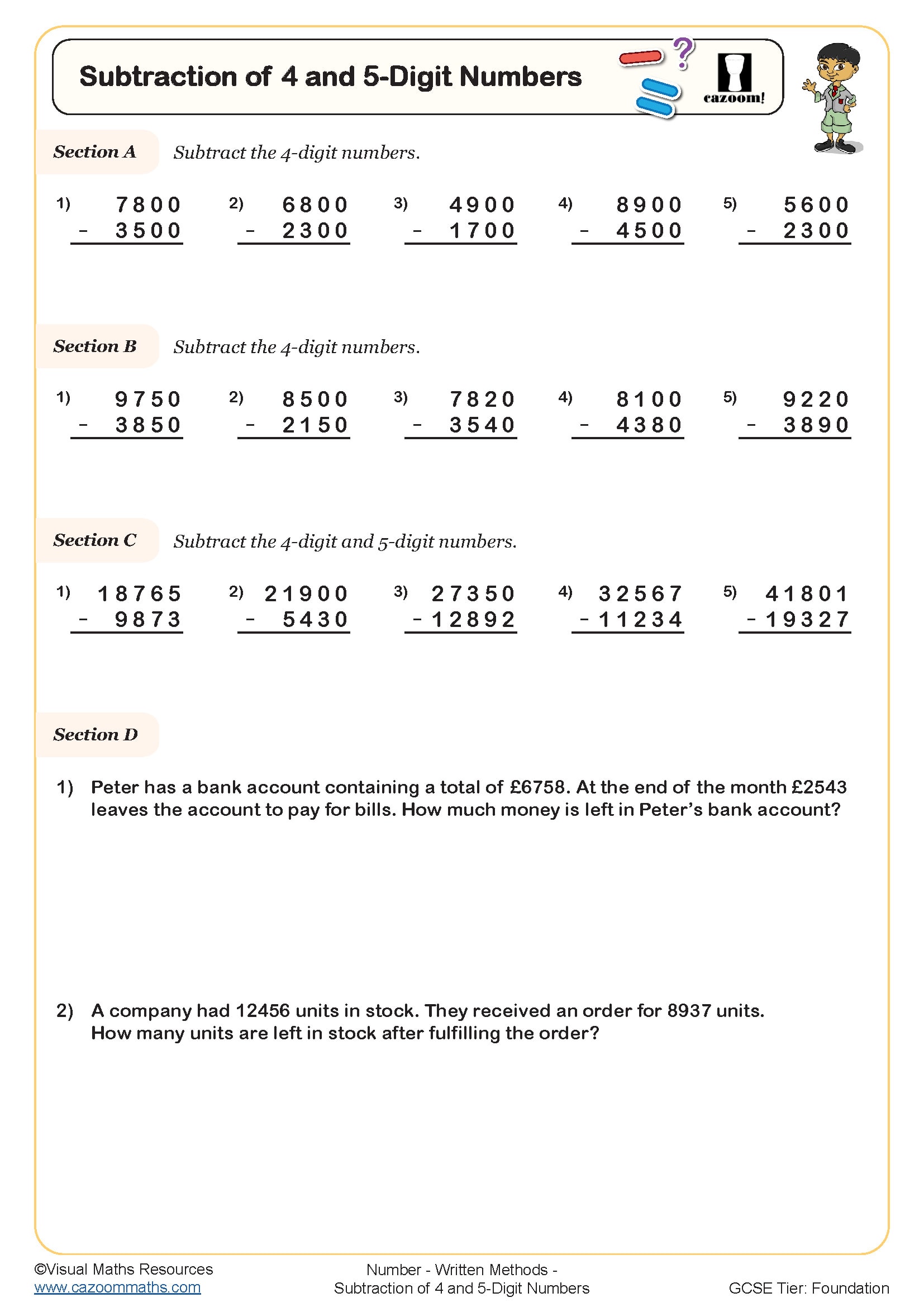
Use Formal Methods For Addition of Integers
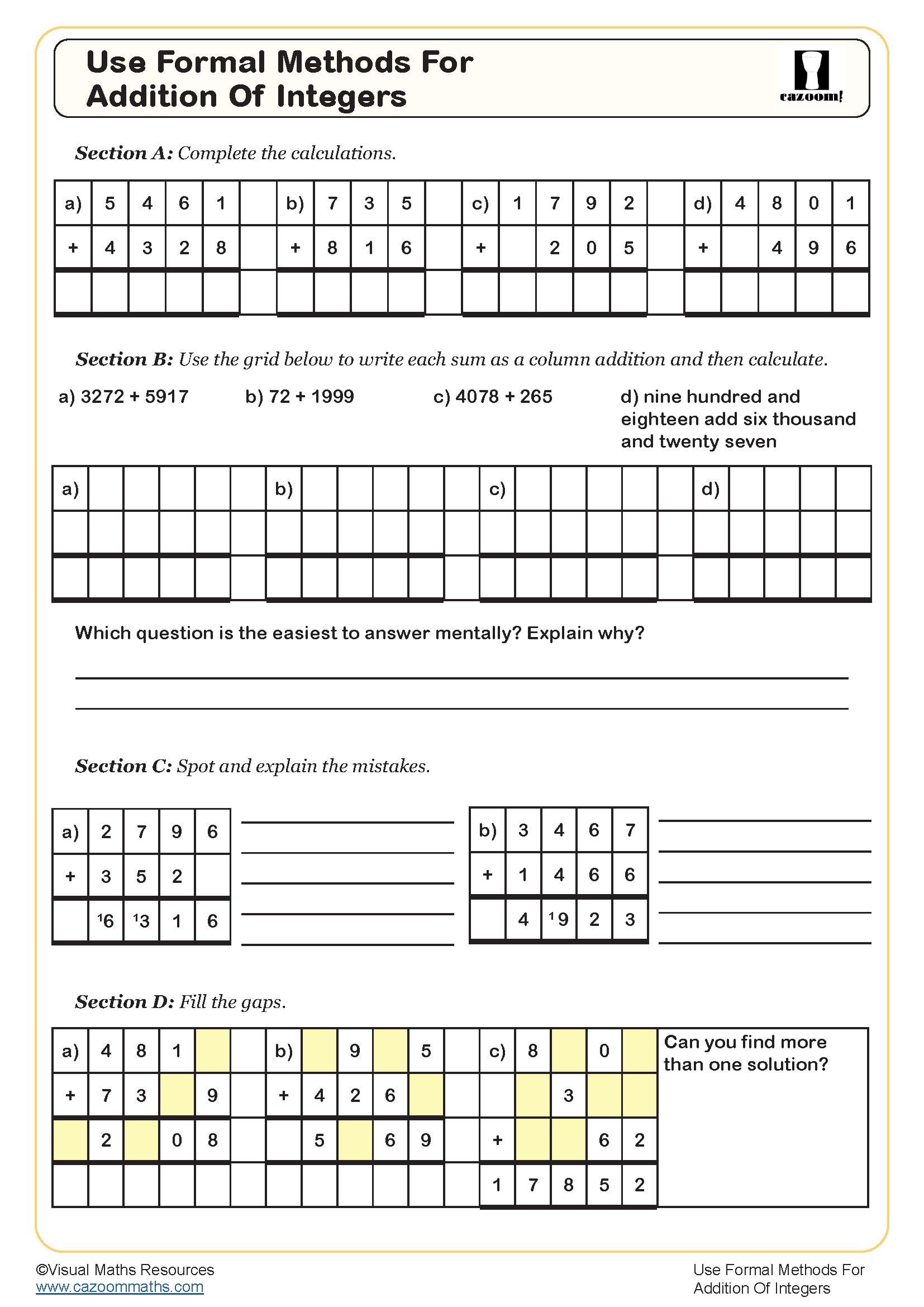
Use Formal Methods For Subtraction of Integers
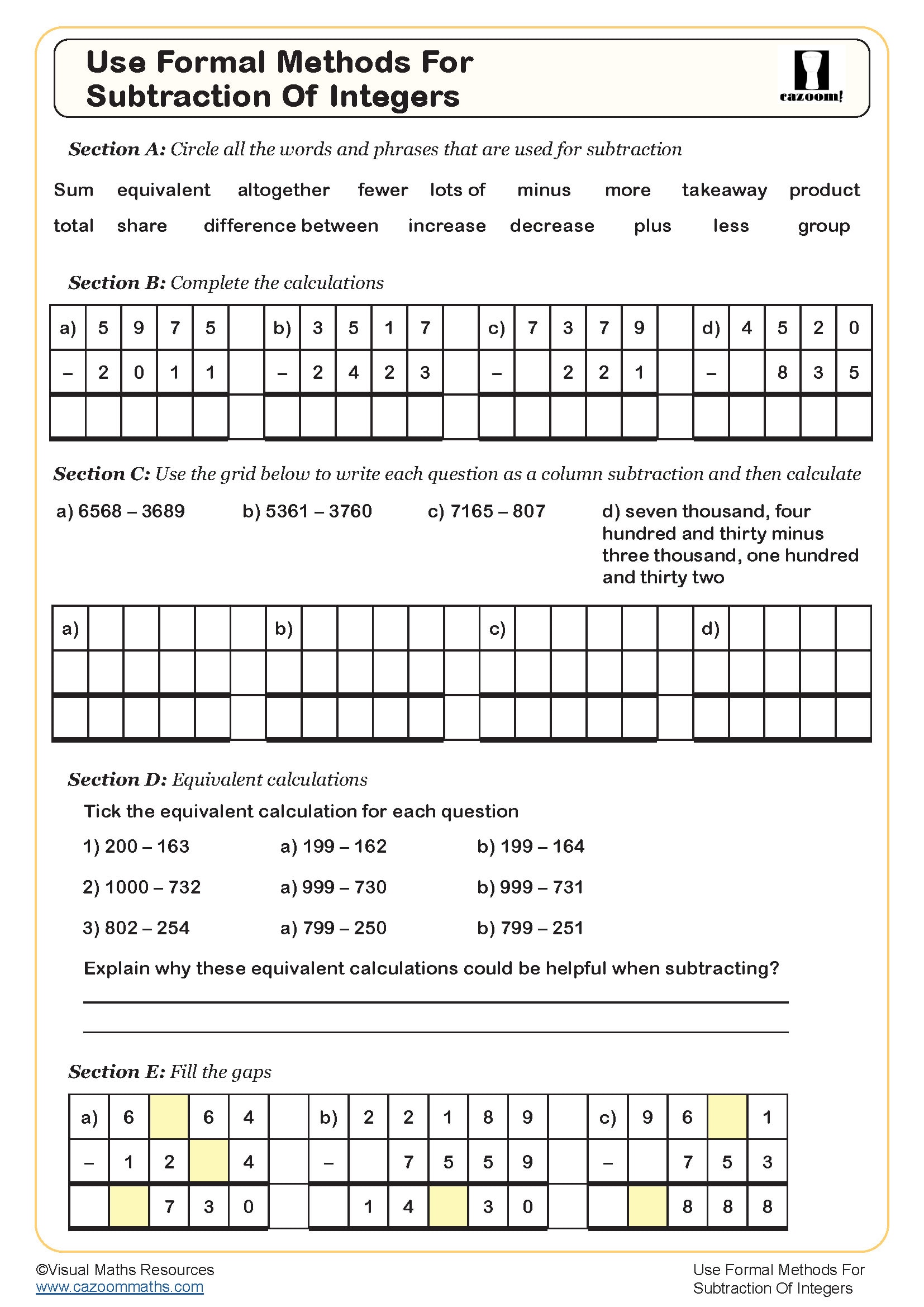
How Do These Printable PDF KS3 Written Methods Worksheets Help Students Progress
The practice of formal calculation methods develops neural pathways which enhance both mathematical precision and speed of processing. Students who learn systematic methods in Year 7 achieve better results in algebra, geometry and data handling because these basic skills directly apply to advanced operations. The systematic practice allows teachers to detect conceptual errors before they solidify into permanent misconceptions while teaching students to solve complex problems through methodical thinking. The practice of written methods helps students develop clear presentation skills for their work because examiners value this skill, and it remains crucial for collaborative problem-solving. The consistent use of these techniques enables students to develop automaticity, which allows them to direct their thinking power toward advanced concepts instead of simple calculations.
Specific learning benefits include:
• Masters column addition with decimals
• Develops systematic multiplication approaches
• Strengthens division accuracy and checking
• Builds multi-step problem strategies
• Improves mathematical presentation skills
• Creates a foundation for algebraic manipulation
• Enhances number sense through structure
From Column Addition to Division: Worksheet Topic Overview
These worksheets progress from reinforcing familiar techniques to introducing sophisticated secondary-level calculations. Each topic includes step-by-step demonstrations that reveal the logic behind formal methods, helping students understand why procedures work rather than simply memorising steps. The materials balance computational practice with varied contexts, ensuring students recognise when specific techniques prove most efficient.
The core skills covered include:
• Column addition and subtraction – including decimals and negative numbers
• Short multiplication – single-digit multipliers with carrying
• Long multiplication – multi-digit numbers using grid or column methods
• Short division – dividing by single digits with remainders
• Long division – a systematic approach to complex divisions
• Order of operations – applying BIDMAS correctly in calculations
• Decimal calculations – maintaining place value through operations
• Estimation and checking – using rounding to verify answers
• Mixed operations – combining methods in multi-step problems
Are You Teaching Number Skills the Best Way? Try These Year 7 Worksheets
Cazoom Maths worksheets carefully break down each topic so that they can be used by students with a wide range of abilities, which is common in Year 7 classrooms. The teaching resources take into account that students come from different primary schools with different levels of maths knowledge. They create a single framework that respects what students have already learnt while setting consistent expectations for secondary school. Teachers can quickly find specific error patterns and give targeted feedback on answer sheets with fully worked solutions. The right amount of practice for fluency development and different problem situations keeps students interested in lessons. These print-ready resources are especially helpful for departments that don't have a lot of time because they save time on preparation while still providing high-quality teaching materials that can be used for whole-class teaching, homework, and intervention sessions.
From Shopping to Sports: Real-Life Written Methods Applications for Year 7 Pupils
Formal calculation techniques underpin countless real-world scenarios students encounter daily. Understanding when written methods prove more reliable than mental arithmetic develops practical mathematical judgement essential for adult decision-making.
• Budget management – calculating savings and comparing deals accurately
• DIY projects – measuring materials and calculating quantities needed
• Journey planning – working out distances, times and fuel costs
• Recipe scaling – adjusting quantities for different serving sizes
• Sports statistics – calculating averages and performance data
• Environmental projects – analysing carbon footprints and energy usage
• Technology usage – understanding data limits and download times
• Part-time work – calculating wages, tax and hourly rates